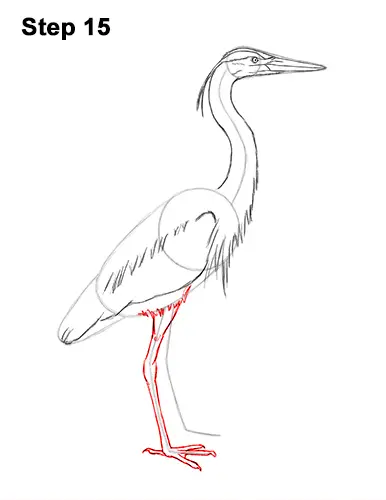
Step 15: Use the line under the body, on the left side as a guide to draw the great blue heron's first leg. Draw the base of the leg at the top using a series of short lines for the feathers. Follow the path of the guide and draw the shape of the leg around it. Make the section where the line bends rounder for the joint. Great blue herons have very thin legs, so don't draw the shape of the leg too far away from the guide line. Draw the middle toe along the path of the portion of the guide that bends to the right. Draw the other toes above and below the middle toe at and angle. Bend the tips a bit for the claws. The toe at the top will be partially blocked by the middle toe. Add the bird's fourth toe on the left side as well.
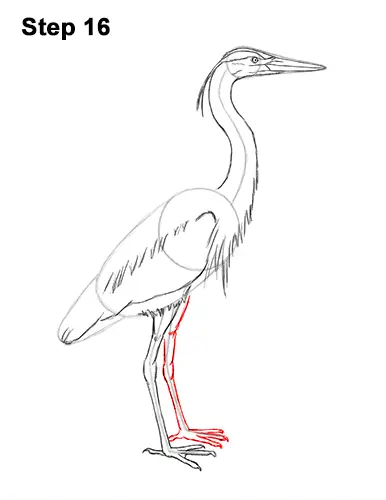
Step 16: Use the line on the right as a guide to draw the heron's other leg the same way. Follow the path of the guide and draw the shape of the leg around it. The base at the top should be wide, and the joint near the middle should be bulbous. Draw the bird's toes at the bottom by using the bent portion of the line as a guide. Draw three toes pointing front and one toe pointing back. The toe pointing back will be partially blocked by the first leg.
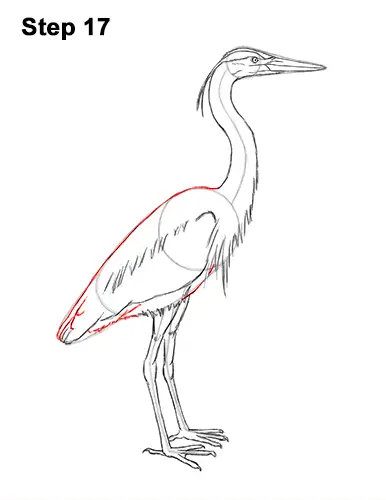
Step 17: Use the remaining lines and shapes as guides to draw the rest of the great blue heron's body. Darken the outer edges of the guides to create the shape of the body. Add some thin arcs on the left side for the bird's tail feathers. Use short strokes along the bottom guides for a feather- like texture. Don't overlap the chest feathers on the right.
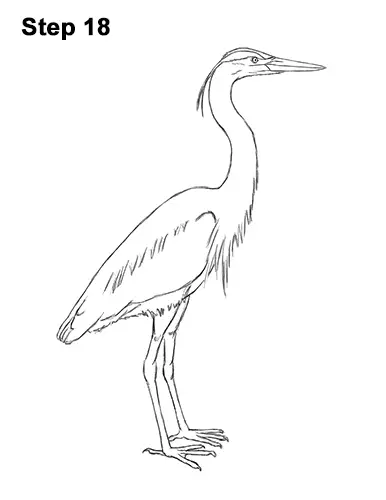
Step 18: For a cleaner look, erase as much as you can of the initial guide lines. Don't worry about erasing all of the guides. It's okay to leave some behind. Re-draw any final sketch lines you may have accidentally erased.
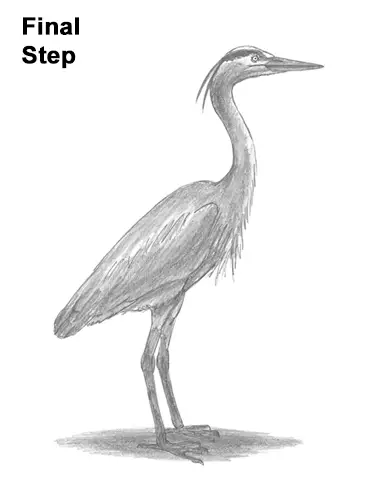
Final Step: Add some shading to your great blue heron drawing for more detail. Use a dark value for the feather pattern above the eye and the feathers behind the head. Use a medium value for the beak and most of the body. The top of the head should be white along with a streak across the eye. The right side of the neck and the top section on the folded wing should also be white. The bird's tail feathers should be darker. Use a dark value for the legs too. For a more detailed guide on how to shade, check out this tutorial: How to shade.
Vary the pressure on your pencil to get different degrees of tonal value. Shading can be time-consuming, so be patient and take breaks. Add some shadows throughout the great blue heron's body using a slightly darker value to give the drawing more volume and dimension. It's always a good idea to use reference for a more accurate drawing.
Add a cast shadow underneath. This helps ground the heron so it doesn't appear to be floating. Don't forget to pause the video after each step to draw at your own pace.
Thanks for visiting! Subscribe to the How2DrawAnimals YouTube Channel for a new tutorial every Saturday.
To learn how to draw popular cartoon characters, visit EasyDrawingTutorials.com.
RELATED TUTORIALS
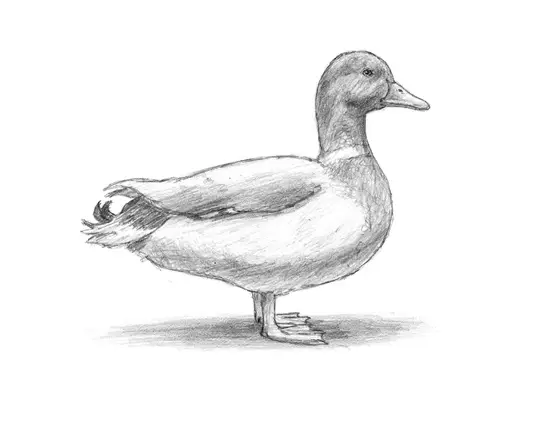 |
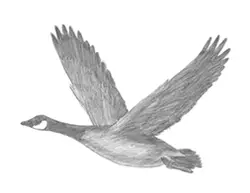 |
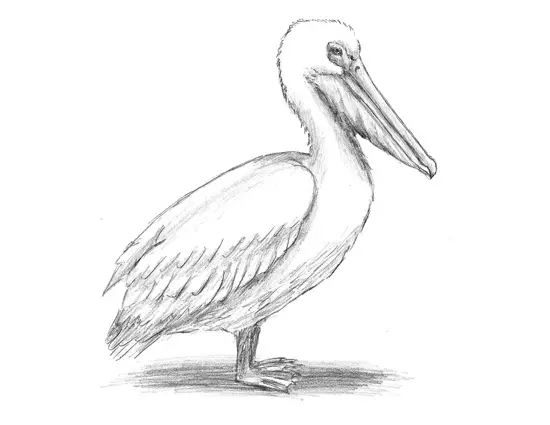 |







